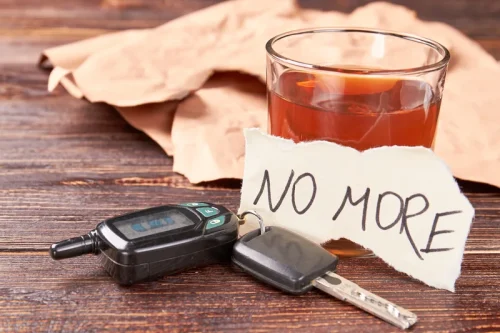Recovery After Rehab: Moderation or Abstinence?

Finally, reduced drinking is often the focus of a harm-reduction approach, where the likely alternative is not abstinence but continued alcoholism. Vaillant (1983) labeled abstinence as drinking less than once a month and including a binge lasting less than a week each year. The position of ALCOHOLICS ANONYMOUS (AA) and the dominant view among therapists who treat alcoholism in the United States is that the goal of treatment for those who have been dependent on alcohol is total, complete, and permanent abstinence from alcohol (and, often, other intoxicating substances).
- This reduces cravings for alcohol when used consistently (i.e., each and every time the person drinks).
- The disease model of alcoholism and drug addiction, which insists on abstinence, has incorporated new areas of compulsive behavior—such as overeating and sexual involvements.
- Furthermore, noprior study has considered length of time in recovery when comparing QOL betweenabstinent and non-abstinent individuals.
- Separate network meta-analyses by intervention types (psychosocial interventions, drug, or combined drug interventions) were conducted to check the robustness of results to the possibility that treatment effects were not transitive across different approaches of studies to intervention.
- Randomised controlled trials comparing two or more interventions that could be used in primary care.
- The population of people who use MM is pretty well educated and is made up for the most part of problem drinkers rather than those meeting full-blown alcohol dependence criteria.
Is Controlled Drinking Possible for Alcoholics?

We believe in the power of personalised therapy, where our experts tailor a recovery plan suited to your needs and circumstances. It’s during this period that peer support becomes invaluable; it helps to know that others are experiencing similar struggles or have overcome them already. A study conducted at the University of Gothenburg, Sweden found that the Reagans of the world are more successful in treatment than the Saras. Adi Jaffe, Ph.D., is a lecturer at UCLA and the CEO of IGNTD, an online company that produces podcasts and educational programs on mental health and addiction. There was no inpatient treatment component, just use of the MM website alone, or in conjunction with the new interactive web application.

Set Attainable Goals
The population of people who use MM is pretty well educated and is made up for the most part of problem drinkers rather than those meeting full-blown alcohol dependence criteria. The idea is to teach problem drinkers more responsible drinking habits so that they don’t devolve their habits into all-out alcoholism. People with alcohol use disorder who try to quit drinking often ask whether they have to stop consuming alcohol forever—or if they can learn to drink in moderation. Until recently, experts saw no room for social drinking or “just one.” However, programs such as Moderation Management (MM) now allow for a certain level of controlled drinking and have helped many learn to drink safely. Some people aren’t ready to quit alcohol completely, and are more likely to succeed if they cut back instead. In this case, moderation serves as a harm reduction strategy that minimizes the negative consequences of drinking.

What proportion of treated alcoholics abstain completely following treatment?
- Some people aren’t ready to quit alcohol completely, and are more likely to succeed if they cut back instead.
- The primary outcome measure was dichotomous, ideally extracted as the number of patients who remained abstinent (no alcohol intake) after randomisation, out of the total number of participants randomised.
- Given low treatment engagement and high rates of health-related harms among individuals who use drugs, combined with evidence of nonabstinence goals among a substantial portion of treatment-seekers, testing nonabstinence treatment for drug use is a clear next step for the field.
- No controlled-drinking category was included, but this column comprises those in the study who drank without ever becoming intoxicated during the 2-year follow-up (the latter data are not fully reported in the published article).
We summarize historical factors relevant to non-abstinence treatment development to illuminate reasons these approaches are understudied. Simply put, those who want to learn to drink in moderation are less likely to achieve their goal, while those who set a goal of quitting drinking entirely see greater success. Sara explained to her therapist that she didn’t think she could quit drinking altogether. When out for a nice dinner or attending a get-together, she still wanted the freedom of having a drink or two.
Heterogeneity was assessed using the results of the pairwise analyses, and between study variance for the network meta-analyses (τ2). We used the mean of the distribution of ranks for each intervention to present its relative order of preference based on the network meta-analysis. A number of studies have examined psychosocial risk reduction interventions for individuals with high-risk drug use, especially people who inject drugs. In contrast to the holistic approach of harm reduction psychotherapy, risk reduction interventions are generally designed to target specific HIV risk behaviors (e.g., injection or sexual risk behaviors) without directly addressing mechanisms of SUD, and thus are quite limited in scope. However, these interventions also typically lack an abstinence focus and sometimes result in reductions in drug use. Despite the growth of the harm reduction movement globally, research and implementation of nonabstinence treatment in the U.S. has lagged.
Levels of Care in Drug and Alcohol Rehab Programs
- In 1990, Marlatt was introduced to the philosophy of harm reduction during a trip to the Netherlands (Marlatt, 1998).
- Most scientists who studied SUD treatment believed that abstinence was the only acceptable treatment goal until at least the 1980s (Des Jarlais, 2017).
- Unfortunately, there has been little empirical research evaluating this approach among individuals with DUD; evidence of effectiveness comes primarily from observational research.
- Remember that every person’s journey is unique; there are no one-size-fits-all solutions for managing alcohol intake.
- We do not know what factors relate to non-abstinent vs. abstinent recovery amongindividuals who define themselves as in recovery.
The capacity to offer this level of support in specialist services for the number of patients who need such care is, however, limited; about 82% of people do not receive the specialist treatment needed.7 Switching the management of alcohol dependence to within primary care has the potential to improve access to treatment. Here we consider primary care to be a setting where medical https://ecosoberhouse.com/ services were provided in general practice, the first point of contact for patients, and not by specialist services.8 To achieve better long term outcomes, the maintenance of abstinence needs to be followed by medium to long term support. Although such support is currently managed by specialist care, primary care stands in a unique position to provide holistic care.


A comparison of objective and subjective measures of alcohol dependence as predictors of relapse following treatment. E Although all subjects in this study were hospital controlled drinking vs abstinence patients, only one group was treated in an alcohol unit. This group had the worst outcomes of any group, but these outcomes were not reported separately.



 お問い合わせ
お問い合わせ